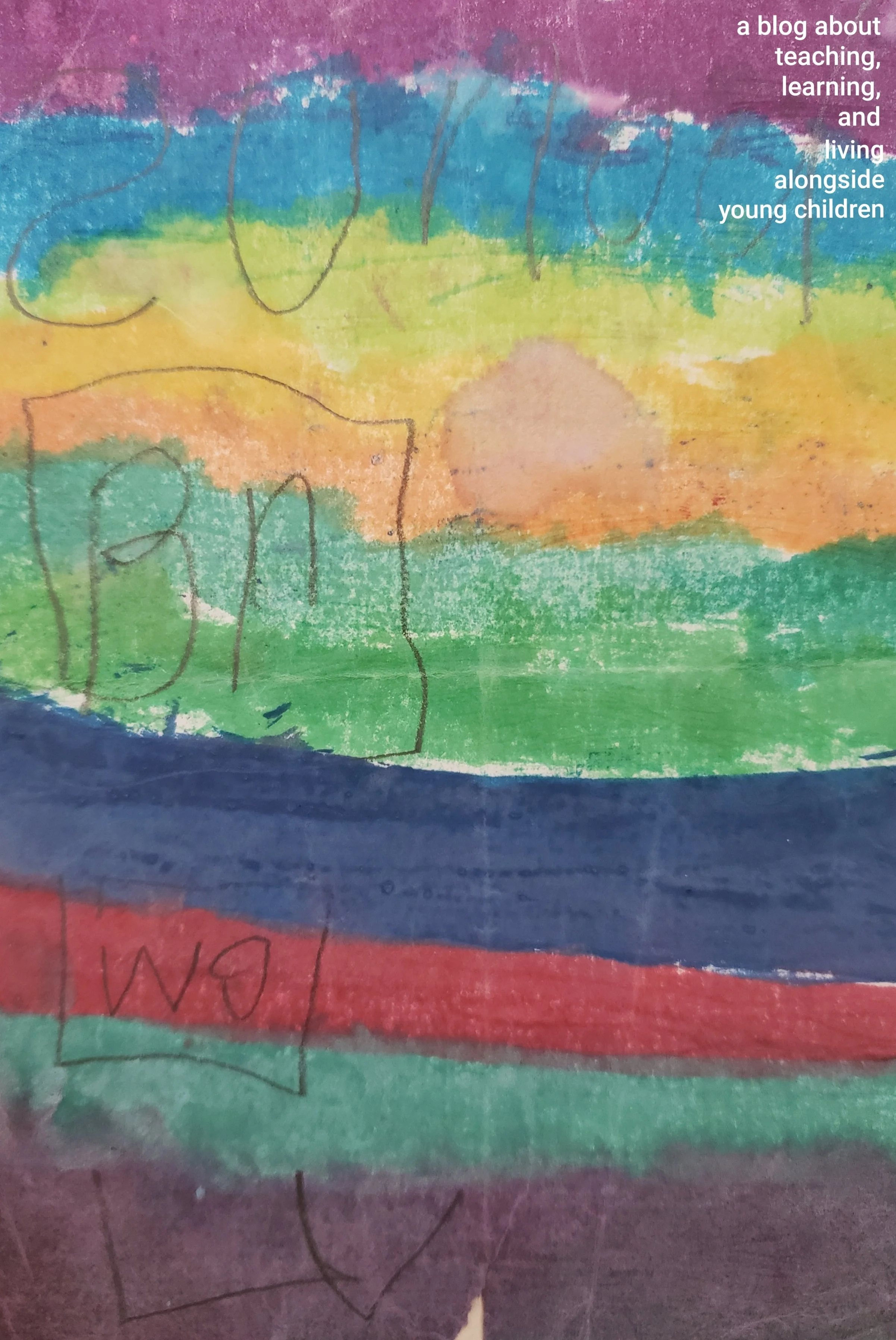Reggio Emilia And The Art Of School
/Illustrated by A., Age 3
Note: This post may require a little context about the specific region and educational philosophy I examine here. Click here for a quick, useful synopsis of the Reggio Emilia Approach to education.
This year, I had the great privilege of going on a professional study tour of the schools in Reggio Emilia, Italy. I’ve been studying the work of educators there for some of the most formative, fruitful years of my career, but I did not go to Italy looking for confirmation that “The Reggio Way” is the definitive right way to teach. The central premise of No Magic Lecture, my personal philosophy of education, is that life is an evolving practice. There is no singularly right way to live, be, learn, or teach. Rather, I went to Reggio hoping to find more ways of thinking, doing, and challenging myself as an advocate for the intellectual lives of children, teachers, and families.
The following is my personal reflection on how that practice plays out in the school of Reggio Emilia and what I learned there about the power of thinking intentionally about the life we, as adults and children together, design and enact.
Spoiler alert: I was not disappointed.
***
We arrived in the city of Reggio Emilia, full of questions, excitement, and perhaps a little apprehension about these schools we’d studied for so long. The idea of Reggio had already taken my colleagues and me many places, literally and figuratively, but what would we really find on the cobble-stones streets and legendary light-tables of this mythologized place?
The answer, of course, was more ideas - limitless, malleable, and intangible except for in those moments when materials become metaphors in the hands of children and their adult allies. Atelierista Isabella Meninno (2019) said, “In the atelier we use many languages...To express yourself best, you have to deeply know the grammar of a language. Clay decorates. Clay forms. Clay needs structure.” So it was for us as visiting educators. Immersed in the culture of Reggio, we were afforded a feel for the syntax of their approach and found it based not in Utopia but the constant slipstream of what’s possible when people think together.
The schools of Reggio Emilia advocate for the interplay of philosophy, aesthetics, and politics within groups of people, city and school alike. They see this negotiation of ideas as the basis of democratic life, intentionally expanded to include the rights of children and families to be seen and heard in their community. As a teacher from the Gulliver School of Reggio Emilia told us, “School is a system of relationships.” Relations are built, and Reggio insists that we must carefully choose the foundation upon which we do so, but the architecture of people is never static. We are building with eyes toward the future.
As educators, we design environments and experiences. We use tools and materials. We hope to provoke new ways of knowing in children, families, and in ourselves. These are the mosaic-like pieces of our project. School itself is our large-scale medium for artistic, political, and philosophical progress. And it’s a group effort - an unceasing collaboration of creative agents. For all the beautiful tools, parts, and materials we use, this work is not just about creating art at school. It’s about the art of school.
Meninno, I. (2019). The Hundred Languages of Children: The Culture of The Atelier.


